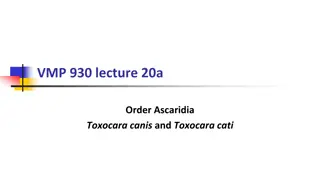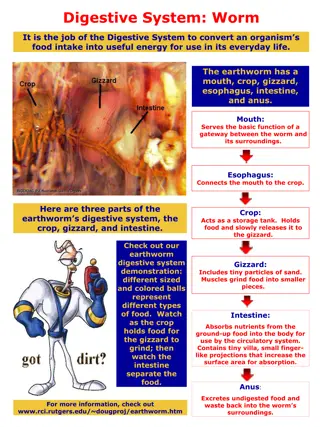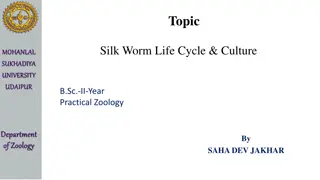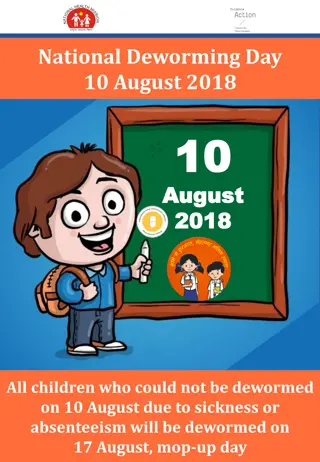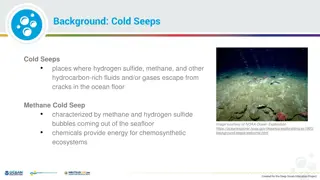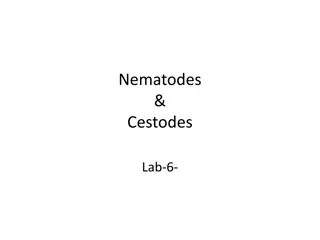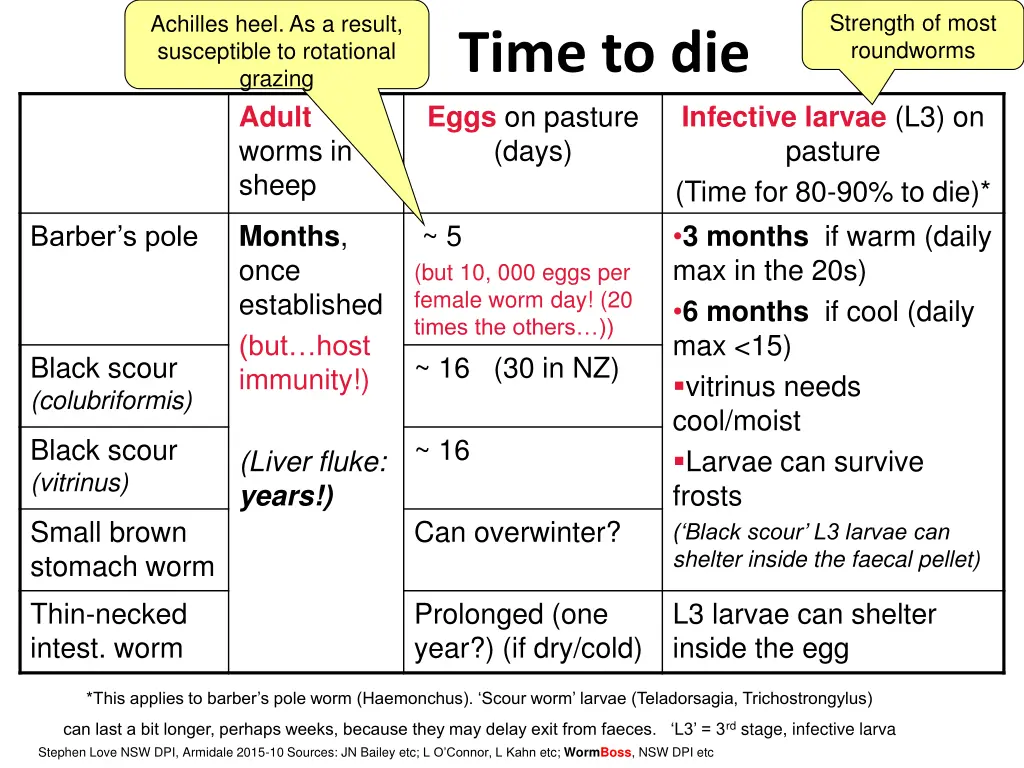
Roundworms: Susceptibility to Rotational Grazing and Lifecycle Characteristics
Explore the susceptibility of most roundworms, including the Achilles' heel leading to susceptibility to rotational grazing. Learn about the time it takes for eggs and infective larvae to die on pasture, the survival abilities of larvae in different conditions, and the impact of post-weaning death rates on operating profit based on site-specific data.
Download Presentation

Please find below an Image/Link to download the presentation.
The content on the website is provided AS IS for your information and personal use only. It may not be sold, licensed, or shared on other websites without obtaining consent from the author. If you encounter any issues during the download, it is possible that the publisher has removed the file from their server.
You are allowed to download the files provided on this website for personal or commercial use, subject to the condition that they are used lawfully. All files are the property of their respective owners.
The content on the website is provided AS IS for your information and personal use only. It may not be sold, licensed, or shared on other websites without obtaining consent from the author.
E N D
Presentation Transcript
Strength of most roundworms Achilles heel. As a result, susceptible to rotational grazing Time to die Eggs on pasture (days) Infective larvae (L3) on pasture (Time for 80-90% to die)* 3 months if warm (daily max in the 20s) 6 months if cool (daily max <15) vitrinus needs cool/moist Larvae can survive frosts ( Black scour L3 larvae can shelter inside the faecal pellet) Adult worms in sheep Months, once established (but host immunity!) ~ 5 (but 10, 000 eggs per female worm day! (20 times the others )) ~ 16 (30 in NZ) Barber s pole Black scour (colubriformis) Black scour (vitrinus) ~ 16 (Liver fluke: years!) Small brown stomach worm Thin-necked intest. worm Can overwinter? Prolonged (one year?) (if dry/cold) L3 larvae can shelter inside the egg *This applies to barber s pole worm (Haemonchus). Scour worm larvae (Teladorsagia, Trichostrongylus) can last a bit longer, perhaps weeks, because they may delay exit from faeces. L3 = 3rd stage, infective larva Stephen Love NSW DPI, Armidale 2015-10 Sources: JN Bailey etc; L O Connor, L Kahn etc; WormBoss, NSW DPI etc
To produce larvae, eggs on pasture need warmth / moisture * Life span (days) Minimum temps (daily min and max**) >10 (o/night) >16-18 (day) Ideal temp range oC Moisture (rain etc)*** 5 25-30 10-15+ mm/wk Barber s pole H contortus Black scour T colubriformis 16 >5 >15 (day) 25-28 10+ mm/wk Black scour T vitrinus (more common in winter rainfall areas) 16? >2 (o/night) 8-18 10+? (needs cool/moist) Often enough in faeces Small brown stomach Tel.(Ost.). circumcincta >4 (o/night) 13-21 Can overwinter? * In significant numbers. Clearly, for example, barbers' pole worm eggs don t all stop dead when daily min. is < 10oC ** the daily max may be more important than the daily min temp. *** A more accurate measure includes evaporation Stephen Love NSW DPI, Armidale March 2012Sources: JN Bailey etc; L O Connor, L Kahn etc; NSW DPI, WormBoss etc
Impact of post weaning death rates on operating profit based on Bungarby site Post weaning death rate % Merino self replacing, sell wethers at 15 mths Merino * terminal sell all lambs Base % loss of weaners 5% 2% + 4% to base -4.5% -3.8% + 8% to base -11.4% -8.7%







